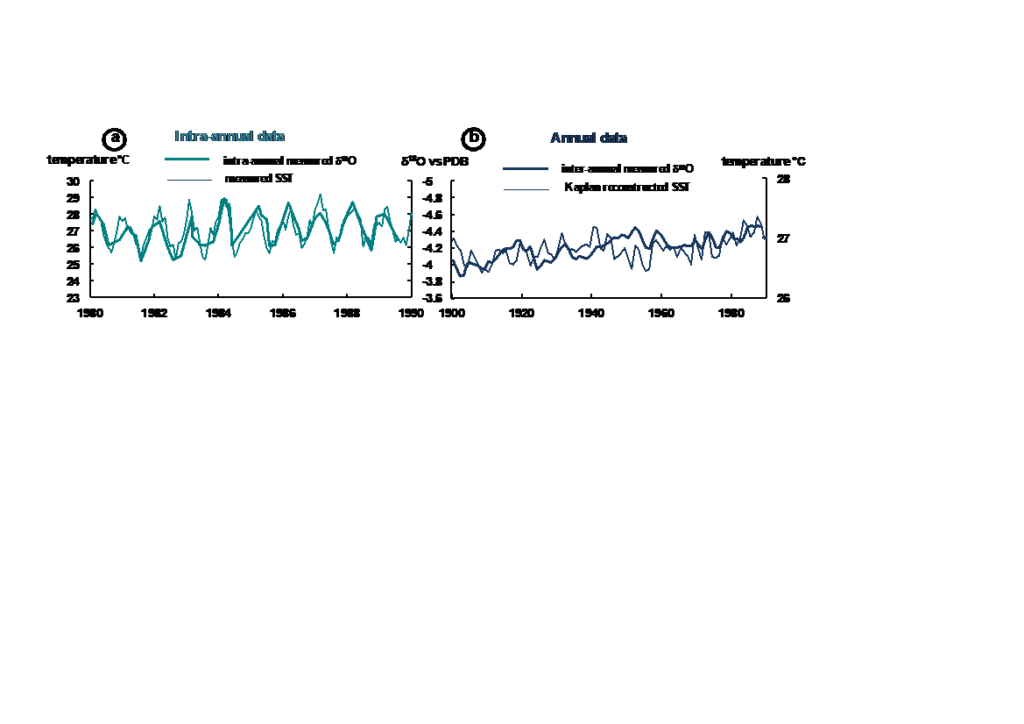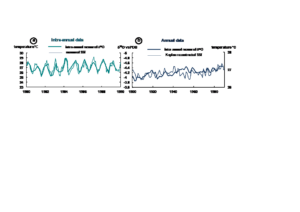La lumière, un paramètre environnemental jouant un rôle crucial dans la croissance de l’aragonite corallienne et la formulation du d18O, est toujours négligée dans la littérature géochimique. Cependant, en réexaminant des études déjà publiées, nous avons démontré que la lumière pouvait être considérée comme un effet vital affectant les rapports isotopiques de l’oxygène de l’aragonite corallienne. En réexaminant les séries de données incluses dans une publication de Weber et Woodhead (1972), nous avons souligné que les étalonnages annuels d18O-température annuelle de tous les genres de coraux considérés peuvent être comparés parce que leur évaluation suppose des niveaux de lumière homogènes. La température a une influence sur le d18O parce qu’elle influence le d18O de deux façons : premièrement, elle agit comme le prévoit la thermodynamique, ce qui implique une diminution du d18O, et deuxièmement, elle induit une augmentation de la photosynthèse, ce qui entraîne une augmentation du d18O. Lorsque la température annuelle la plus élevée se produit en même temps que l’irradiation annuelle la plus élevée, l’amplitude annuelle du d18O est réduite. La calibration d18O-température annuelle s’explique également par la distribution relative des microstructures, des centres de calcification ou COC et des fibres, en fonction de la morphologie, et à son tour de la taxonomie. Nous avons également étudié les calibrations mensuelles de température d18O-mensuelle des Porites cultivées sur les mêmes sites que Stephans et Quinn (2002), Linsley et al. (1999, 2000) et Maier et al. (2004). De multiples preuves ont montré que la température est le forçage environnemental dominant sur le d18O et que le mélange de température et de lumière détermine également la distribution relative des microstructures, expliquant les relations entre les constantes d’étalonnage de Porites. En examinant les calibrations mensuelles et annuelles du d18O, de la température mensuelle et annuelle, nous avons révélé que la calibration mensuelle résulte de la superposition de la variabilité saisonnière et annuelle au fil du temps. Le d18O saisonnier, fortement influencé par les fluctuations saisonnières de la lumière, peut être obtenu en supprimant le d18O interannuel qui n’est que faiblement influencé par la lumière. De telles caractéristiques nécessitent la reconstitution d’outils fréquemment utilisés, tels que les concepts couplés d18O – Sr/Ca ou pseudo-coral.
Référence : Juillet-Leclerc A., 2018. Le rôle de la lumière comme effet vital sur la composition isotopique en oxygène du squelette des coraux. Discussion sur les biogéosciences. Doi: 10.5194/bg-2018-433



